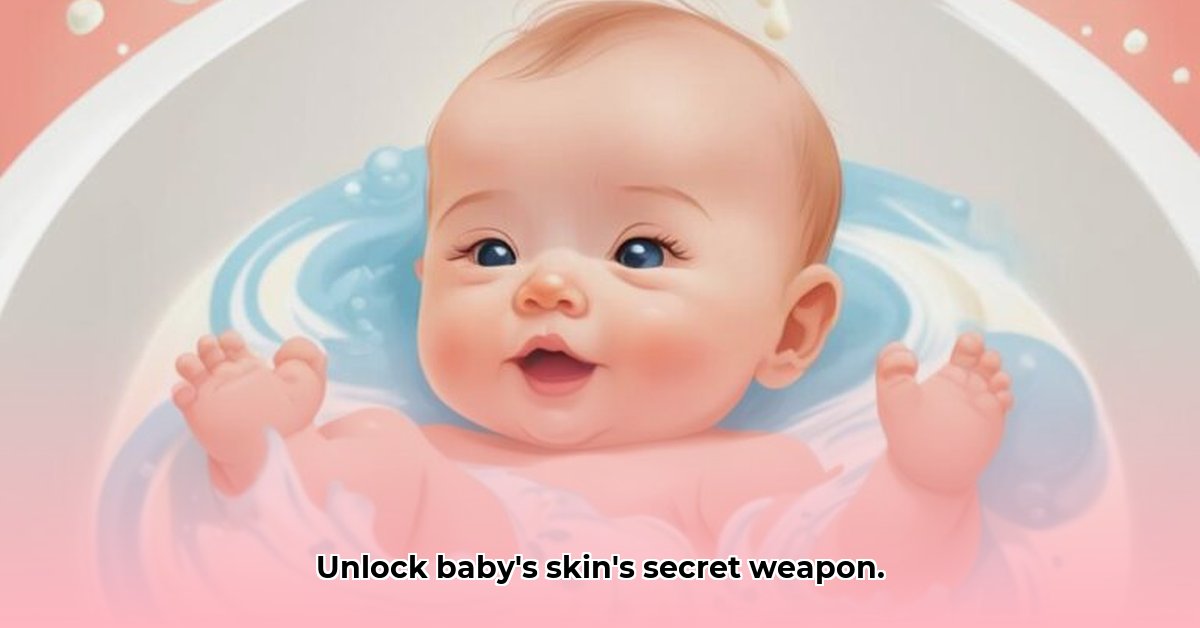
Dealing with a fussy baby battling dry skin, diaper rash, or eczema is challenging. Parents naturally seek gentle, natural solutions, and many are discovering the potential benefits of breast milk baths. This article explores the reasons behind their growing popularity, providing clear, safe, and effective instructions, alongside expert insights and a balanced view of the evidence. We’ll help you determine if this natural remedy could soothe your baby's skin and transform bath time into a relaxing experience.
Understanding the Potential Benefits
Breast milk offers more than just nourishment; its unique composition may provide significant benefits for your baby's delicate skin. Rich in fatty acids like oleic and linoleic acid, it deeply moisturizes and hydrates. Furthermore, its abundance of antibodies and antimicrobial agents may help combat infections and reduce inflammation, potentially soothing common skin irritations and promoting faster healing. Isn't it remarkable how nature provides such a perfect, personalized solution? But how effective are these benefits truly?
Addressing Eczema: A Natural Approach?
Eczema, characterized by itchy, inflamed patches, significantly impacts both babies and their parents. Many parents are seeking natural alternatives, and breast milk baths are gaining traction. While research is still limited, anecdotal evidence and preliminary studies suggest that breast milk's unique properties may offer some soothing relief. However, it's crucial to manage expectations; individual responses vary, and breast milk baths should never replace prescribed eczema treatments. A holistic approach, guided by your pediatrician, is always recommended.
How to Safely Use Breast Milk Baths for Eczema in Babies
Before you begin, always consult your pediatrician, especially if your baby has severe eczema or other health concerns. They can offer personalized advice and help ensure this method is appropriate for your individual situation.
Preparing the Breast Milk Bath:
- Collect fresh breast milk: The amount needed depends on the bath's size; a few ounces in a small tub is generally sufficient. Using fresh milk minimizes the risk of bacterial contamination.
- Add to lukewarm bathwater: Never use hot water. The water temperature should be comfortably warm, tested on your inner wrist.
- Gentle bathing: Submerge your baby for 5-10 minutes, avoiding harsh scrubbing. Focus on gently cleansing irritated areas.
- Gentle drying: After the bath, gently pat your baby's skin dry with a soft towel. Avoid rubbing, which can further irritate sensitive skin.
- Moisturization: Apply a fragrance-free, hypoallergenic baby moisturizer, if needed.
Important Safety Considerations:
- Hygiene: Maintain impeccable hygiene throughout the process. Use clean containers for storing and transferring milk.
- Allergic Reactions: Monitor your baby closely for any adverse reactions like redness, rash, or increased irritation. If observed, discontinue immediately and consult your pediatrician.
- Frequency: Begin with one to two baths per week and observe your baby's response. Adjust frequency based on your baby’s reaction.
- Supplement, Not Replacement: Breast milk baths should complement, not replace, a proper eczema treatment plan prescribed by your pediatrician.
Weighing the Pros and Cons
| Pros | Cons |
|---|---|
| Potential soothing effect on eczema | Limited scientific evidence of effectiveness; more research is needed |
| Readily available and cost-effective | Requires fresh breast milk; may be inconvenient for some |
| Natural and gentle | No guarantee of efficacy; may not work for all babies |
| May improve skin hydration | Potential (though rare) for allergic reaction; requires careful monitoring |
A Note of Caution from Dr. Emily Carter, Pediatrician at Children's Hospital of Philadelphia
"While the anecdotal evidence surrounding breast milk baths is compelling, it's crucial to understand that more rigorous research is needed to confirm their effectiveness. In my practice, I often advise parents to consult with me before introducing this approach, particularly for babies with existing skin conditions. Breast milk baths can be a beneficial supplement to other treatments, but they should never replace medical advice or prescribed therapies."
The Bottom Line: A Natural Approach with Cautious Optimism
Breast milk baths present a potentially soothing, readily available, and cost-effective approach to managing certain baby skin conditions. However, it’s crucial to approach this remedy cautiously. Always discuss this with your pediatrician, maintaining realistic expectations about efficacy and potential risks, emphasizing hygiene and diligent monitoring. Remember, a well-informed approach, guided by your healthcare provider, is key to safeguarding your baby's skin health.